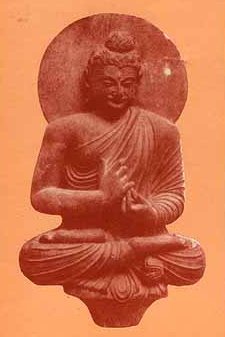Panatipata, Pāṇātipāta, Pana-atipata: 2 definitions
Introduction:
Panatipata means something in Buddhism, Pali. If you want to know the exact meaning, history, etymology or English translation of this term then check out the descriptions on this page. Add your comment or reference to a book if you want to contribute to this summary article.
In Buddhism
Theravada (major branch of Buddhism)
Source: Dhamma Dana: Pali English GlossaryM/F/N (Fact to kill).
Theravāda is a major branch of Buddhism having the the Pali canon (tipitaka) as their canonical literature, which includes the vinaya-pitaka (monastic rules), the sutta-pitaka (Buddhist sermons) and the abhidhamma-pitaka (philosophy and psychology).
Languages of India and abroad
Pali-English dictionary
Source: Sutta: The Pali Text Society's Pali-English DictionaryPāṇātipāta refers to: destruction of life, murder Vin. I, 83 (in “dasa sikkhāpadāni, ” see also sīla), 85, 193; D. III, 68, 70, 149, 182, 235; M. I, 361; III, 23; Sn. 242; It. 63; J. III, 181; Pug. 39 sq.; Nett 27; VbhA. 383 (var. degrees of murder); DhA. II, 19; III, 355; DA. I, 69; PvA. 27.
Note: pāṇātipāta is a Pali compound consisting of the words pāṇa and atipāta.

Pali is the language of the Tipiṭaka, which is the sacred canon of Theravāda Buddhism and contains much of the Buddha’s speech. Closeley related to Sanskrit, both languages are used interchangeably between religions.
See also (Relevant definitions)
Partial matches: Atipata, Pana.
Starts with: Panatipata Veramani.
Full-text: Dosahetuka, Kusalakammapathadhamma.
Relevant text
Search found 8 books and stories containing Panatipata, Pāṇātipāta, Pana-atipata, Pāṇa-atipāta; (plurals include: Panatipatas, Pāṇātipātas, atipatas, atipātas). You can also click to the full overview containing English textual excerpts. Below are direct links for the most relevant articles:
Abhidhamma in Daily Life (by Ashin Janakabhivamsa) (by Ashin Janakabhivamsa)
Factor 12-14 - The three abstinences (samma vaca (right speech), samma kammanta (right action), samma ajiva (right livelihood)) < [Chapter 3 - On kusala cetasikas (wholesome mental factors)]
Factor 4 - Cetana (volition, goodwill) < [Chapter 4 - Cetasikas Associated With Both Good And Bad Cittas (mind)]
Domain 2 - Síla (morality) < [Chapter 6 - Ten domains of meritorious actions (ten punna kiriyavatthu)]
The Buddhist Path to Enlightenment (study) (by Dr Kala Acharya)
2.4.1. Abstention from Killing (pāṇātipāta) < [Chapter 3 - Seven Factors of Enlightenment and Noble Eightfold Path]
2.4. Right Action (Sammā-kammanta or Samyak-karmānta) < [Chapter 3 - Seven Factors of Enlightenment and Noble Eightfold Path]
2.4.3. Wrong Sexual Behavior (kāmesu micchācāra) < [Chapter 3 - Seven Factors of Enlightenment and Noble Eightfold Path]
Non-Violence Through The Ages < [January 1959]
The Buddha and His Teachings (by Narada Thera)
Precepts (by Ajahn Sumedho)
The Great Chronicle of Buddhas (by Ven. Mingun Sayadaw)
Part 10b - The method of fulfilling the Perfection of Morality (Sīla-Pāramī) < [Chapter 7 - On Miscellany]